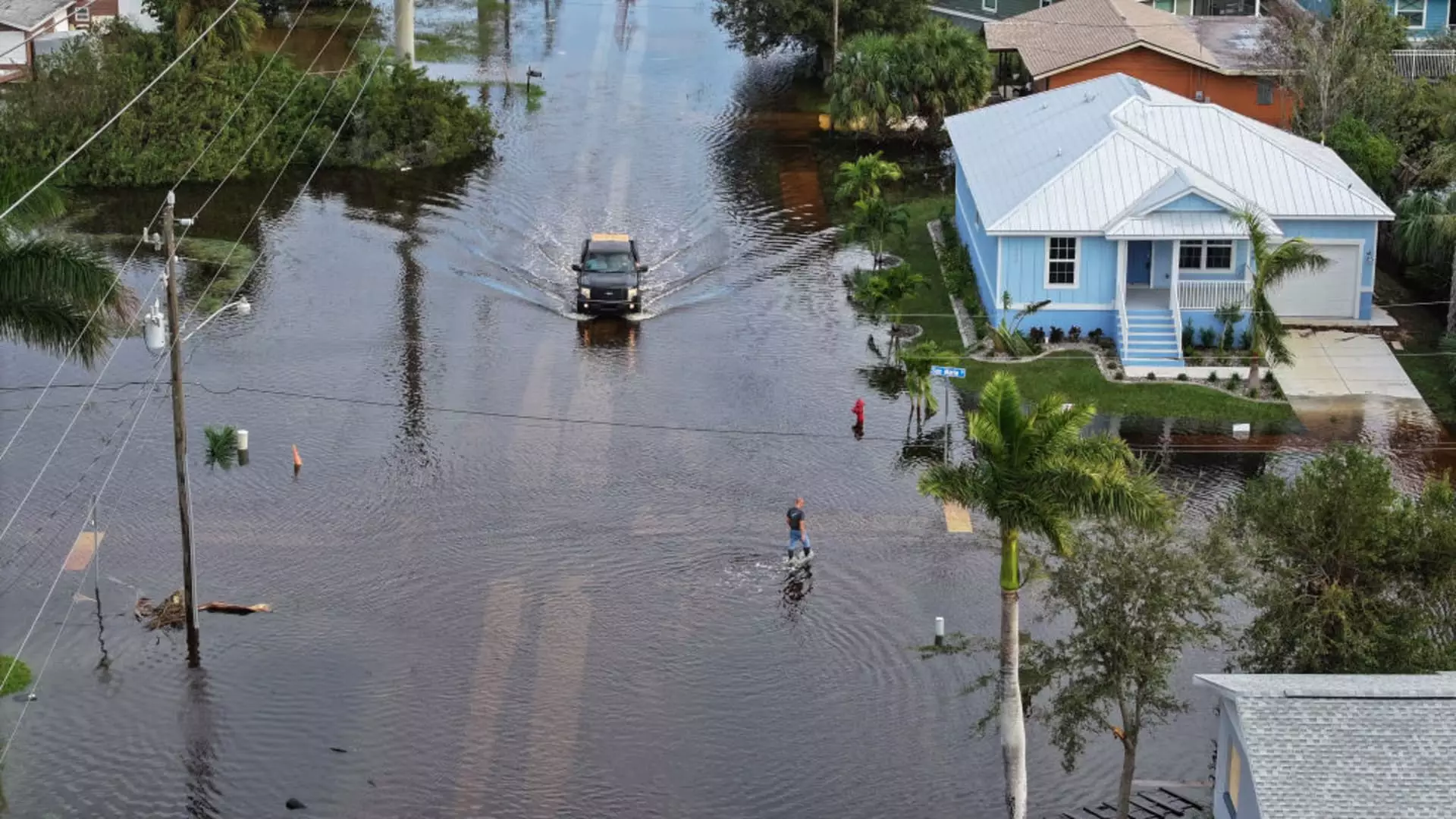As hurricane season rolls in yet again, we find ourselves caught in an annual cycle of anxiety and uncertainty. The National Oceanic and Atmospheric Administration (NOAA) has already warned us to brace for an active hurricane season, with a daunting 60% likelihood of above-average Atlantic storm activity. With predictions that 13 to 19 named storms could arise—six to ten evolving into full-fledged hurricanes, including up to five categorized as major—it’s clear that we are in for a turbulent time. For homeowners, this reality underscores a crucial yet often neglected responsibility: reviewing one’s insurance coverage.
The last hurricane season inflicted an economic toll of approximately $500 billion, illustrating just how devastating these natural disasters can be. Ken Graham, director of NOAA’s national weather service, urges us to take proactive measures, and part of that preparation must include a thorough examination of our insurance policies.
The Hidden Dangers of Underinsurance
It’s astonishing how many Americans remain oblivious to the dangers lurking in their insurance policies. Many don’t realize that inadequate coverage can spell disaster when property damage becomes a reality. Charles Nyce, a risk management expert, stresses the importance of understanding four key elements of your insurance: the property’s value, potential loss costs, flood coverage, and emergency funds. The consequences of neglecting these areas can lead to catastrophic financial strain when disaster strikes.
One would think that inspecting a homeowners insurance policy should be as routine as seasonal gardening, yet for many, it’s a once-in-a-blue-moon affair. The typical homeowner is often blissfully unaware of significant changes in construction costs, which have soared over the past few years. An alarming statistic reveals that building material costs have increased by 42.7%, and labor has risen by 36.3%. Failing to adjust your policy limits in line with these changes can leave you perilously underinsured. The oft-cited “80% rule” suggests that your coverage needs to meet at least 80% of your property’s replacement cost, a benchmark that many homeowners are likely bypassing.
Navigating the Fine Print
One of the most insidious aspects of home insurance is the fine print, particularly when it comes to deductibles. Let’s face it: many homeowners are not adequately aware of what constitutes a “deductible,” let alone what their out-of-pocket responsibilities will be in the event of a claim. For instance, raising your deductible to save some bucks on your premium might seem appealing, but can lead to shocking financial strain if you’re unprepared for the higher out-of-pocket cost after a loss.
Moreover, specialized deductibles like wind deductibles can kick in during hurricane events, and these often shock policyholders when they realize the out-of-pocket expenses can balloon. For a modest house valued at $500,000, a 2% wind deductible can result in a staggering $10,000 bill if damage occurs. Homeowners need to engage in careful consideration when adjusting these deductibles—there’s a thin line between saving money and jeopardizing financial security.
The Crucial Need for Flood Insurance
Flood insurance is another area where ignorance can lead to disaster. Standard homeowners insurance policies usually exclude flood coverage, leaving many homeowners vulnerable. A decomposition of disaster-related figures reveals that flooding is the leading cause of property damage in the U.S. If you’re rolling the dice by assuming that your home will be safe simply because it’s not in a flood-prone area, think again. Floods can occur in unexpected locations, just as seen during Hurricane Helene’s catastrophic effects even in regions like Asheville, where less than 1% of homes had adequate flood insurance.
It’s imperative to consider acquiring a flood insurance policy, ideally through the National Flood Insurance Program (NFIP) or a private insurer. But don’t delay—there’s often a 30-day waiting period for the policy to take effect. Many homeowners wait until a storm is imminent, which can leave them in financial limbo when disaster unveils its full force.
A Call to Action for Homeowners
As we gaze apprehensively at the horizon, we need to shift from apathy to action, especially in the face of guaranteed storm activity. The time to revisit your homeowners insurance policy is before the winds begin to howl and the rains start to pour, not after. Individuals must undertake a holistic review—mapping out their property’s value, coverage limits, and the specific intricacies of deductibles—all while preparing for what could be not just a season of storms, but a season of financial vulnerability.
In these critical times, remember that vigilance is your best defense. As we transition into the heart of hurricane season, homeowners should prioritize their financial fortitude as much as their physical preparedness. Being informed, prepared, and proactive in reviewing your insurance policy is not only a wise move—it’s an imperative for safeguarding your home and financial future.

